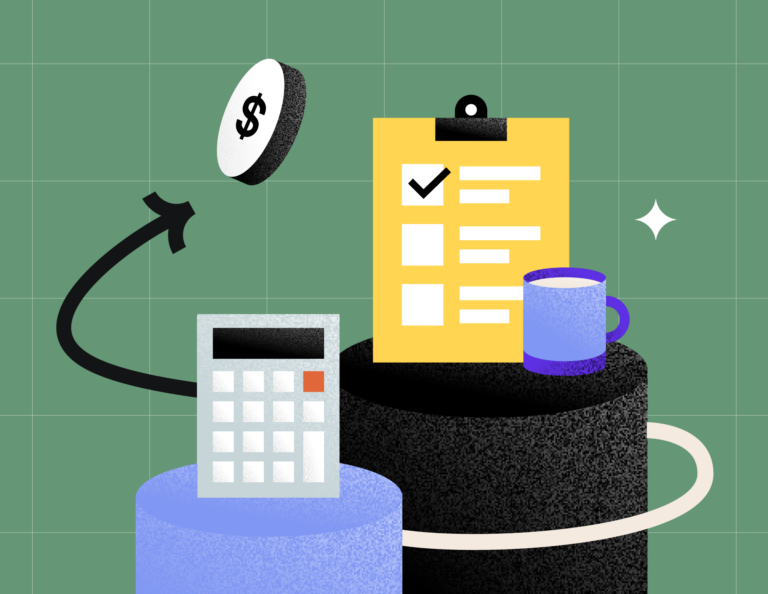Learn how to make a profit and loss statement to track your independent business’s growth and financial health over time.

Financial statements are imperative to understanding your business success, or lack thereof. They give you a way to determine if you’re generating a profit or a loss and what direction your company is headed financially. They also pinpoint inefficiencies that could affect your profitability.
One of the most important financial statements to consider putting together regularly for your business is known as the profit and loss statement, or simply the P&L statement.
However, if you’re like most new independent business owners, you may have never put together financial statements before. To get started, use our complete guide that will teach you how to make a profit and loss statement.
Jump to:
- What is a profit & loss statement?
- Why you need a profit & loss statement
- What should be included in a profit & loss statement?
- How to track profits & losses
- How to categorize your profit & loss statement
- Other financial statements you should consider
- How HoneyBook can revamp your financial reporting
What is a profit & loss statement?
As its name suggests, a profit and loss statement is a report that outlines your company’s profits and losses, which is why it’s also called a profit and loss report.
These reports are one of three crucial financial statements investors look for before investing in a publicly traded company. They’re also essential for private companies and entrepreneurs because they give you a better understanding of your company’s profitability and play a key role in overall financial management.
P&L statements go by many names, including:
- Earnings report
- Income statement
- Expense statement
Regardless of what you decide to call your P&L statement, it’s imperative to maintain one to keep track of your company’s financial success.

Use our free profit & loss template to track revenue and expenses.
Why you need a profit and loss statement
There are multiple benefits to building a profit and loss statement at least once annually, but there’s no shame in making one quarterly. Some of the most important benefits, specifically for tracking self-employed revenue, include:
- Adjust pricing and expenses: Your profit and loss statement shows you how much money you bring in and how much you spend to do so. This may prove to be an invaluable tool that allows you to adjust your pricing and cut expenses where possible to improve your bottom line.
- Understanding your company: It’s wise to set profitability goals, but if you don’t track your profits and losses, you’ll never really know if you hit them. These statements give you a better understanding of your company’s financial performance.
- Find inefficiencies: Once you build your profit and loss statement, you may find inefficiencies that you can improve upon to expand your profitability.
What should you include in a profit and loss statement?
There are multiple categories you should include in your profit and loss statement. We’ll discuss categorization later in this guide on how to make a profit and loss statement later. Nonetheless, all categories you’ll need to include fall into one of three larger categories. Those include:
- Income: This includes all the money you bring into your company from sales of goods or services.
- Expenses: This includes all expenses associated with running your business. That means the cost of raw materials to create your product, the cost of manpower, and administrative costs. Make sure you’re properly tracking your small business expenses each month.
- Profit or loss: Subtract your expenses from your income to determine your profit or loss for the period. For example, if you generated $250,000 in income and had $175,000 in expenses, your profit would be $75,000.
How to track profits and losses
A profit and loss statement does nothing for you if it’s inaccurate. So, it’s essential to track your financials to ensure that when you build your P&L statement, you’re doing so with accurate numbers. You can either do so manually or use software-assisted tracking to streamline the process. Find the details on each option below.
Manual tracking
Using a spreadsheet provider like Excel or Google Sheets is the best way to take the manual approach to profit and loss tracking. When you build your spreadsheet, it should have three pages, including:
- Income: Label the first page of your spreadsheet “Income.” Every time you make a sale that drives income into your business, note the sale on your spreadsheet, including what you sold, the date of the sale, and the amount of money you generated.
- Expenses: Label the second page of your spreadsheet “Expenses.” When you pay business expenses, note them on the sheet, including the name of the expense, the date of the expense, and the amount of money you spent.
- P&L: Label the third page of your spreadsheet “P&L.” Use spreadsheet functions to subtract your total expenses from your total income to produce your profits or losses.
Software-assisted tracking
Manual tracking can become time-consuming quickly. That’s especially the case if you have multiple expenses and produce more than a sale or two per week. Your time is worth money, and you don’t want to waste it.
The good news is that software solutions – like HoneyBook – automatically track your income and expenses so that you can focus on more critical business activities. HoneyBook also makes it possible to build your profit and loss statement with the click of a button and pull in your income from client payments inside the software.
How to categorize your profit and loss statement
As mentioned above, your profit and loss statement should have several categories to make it easy to digest the information. These statements typically include the following categories:
- Net sales: Net sales are the total amount of money you generate from the sale of goods or services. It differs from gross sales, which includes the amount of money you generate plus the money you didn’t collect due to discounts, allowances, and returns.
- Cost of goods sold: This is the amount of money you spend on raw materials and manpower to produce the goods or services you sold.
- Gross margin: When you subtract your cost of goods sold from your net sales, the result is your gross margin. This shows you how much profit you generate without accounting for operating expenses.
- Operating expenses: Operating expenses account for expenses associated with selling your product, like advertising and sales associate salaries. These expenses also include administrative costs.
- Net profit: Your net profit is the total amount of money you generated or lost. This number is generated by subtracting your operating expenses and the cost of goods sold from your net sales.
Other statements you should consider
Although the profit and loss statement is arguably the most important financial statement to create for any business, it’s not the only financial statement you should consider building. To get the best overall picture of your company’s economic well-being, it’s best to couple your P&L statement with a balance sheet and a cash flow statement.
Find the details of these financial statements below.
Balance sheet
A balance sheet is a financial statement typically produced by publicly traded companies, but it can help you better understand your company, even if you’re just a startup entrepreneur. These statements include three key bits of information:
- Assets: This section of a balance sheet outlines the value of the assets your company owns, like cash and cash equivalents, inventory on hand, real estate, equipment, and other business assets.
- Liabilities: This section of a balance sheet outlines the debts your company owes. Liabilities include amounts owed but not yet paid for, like rent, utilities, and employee salaries. Liabilities also include other regular expenses, like interest you pay on bonds.
- Shareholder Equity: Shareholder equity is the total amount of money the company would return to shareholders if it were to be liquidated and all debts paid off.
Cash flow statement
A cash flow statement is a financial document that shows how much cash enters and leaves your company. Cash flow statements are important because they outline how well you’re managing your company’s money.
These statements also show your company’s ability or failure to generate cash fast enough to pay its debts and fund its operations. These statements typically include four main components:
- Cash flow from operating activities: This is a fancy way of saying cash flow from sales.
- Cash flow from investing activities: This section outlines your company’s return on investments it has made.
- Cash flow from financing activities: This includes any additional income you’ve generated by providing financing options to your customers.
- Disclosure of non-cash activities: This includes trading your product or services for another company’s product or service.
How HoneyBook can revamp your financial reporting
If you’re looking for a simple solution for creating the financial statements your company needs, look no further; you’ve found HoneyBook. HoneyBook is a clientflow management platform specifically developed for entrepreneurs and independent businesses.
You can sell your services and book clients faster with HoneyBooks templates for sales brochures, pricing guides, contracts, invoices, and much more. With integrated payment processing, your clients also don’t have to switch services just to book you.
With all your payments in one place, it’s easier to track your profit and analyze it with your expenses. HoneyBook also integrates with Quickbooks to help you automate your accounting even further.
Manage your entire clientflow with HoneyBook
When you manage the full process of selling and delivering your services in one place, it’s easier to track profit and loss.



